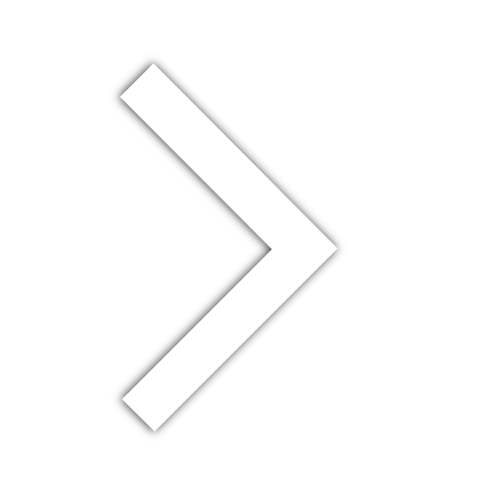7 Thank You Letter Closings
7 Thank you letter closings
THANK YOU LETTER CLOSINGS - A DEFINITIVE GUIDE
The oldest known parchment letter was written in 1190. Evidence of letters written on stone tablets dates much further back. There is a reason handwritten letters have stuck around, even in the age of technology. Letters offer a sense of warmth and personality that can't be conveyed through a computer screen.
Some of the most common types of letters still sent today are thank you notes. You can send these for both formal or informal occasions. People often have questions about how to write thank you notes. One of the most common questions is how to write eloquent thank you letter closings with complimentary closings.
Continue reading for examples of formal and informal letter closings (plus everything in between) and when to use them. By the end you'll know how to end a thank you letter in any situation.
Related: WHAT MAKES A GOOD BUSINESS THANK YOU CARD?
THE POWER OF GRATITUDE
Approaching life with a grateful heart offers numerous benefits to you and those you interact with. For one, it makes you happier! Research demonstrates that expressing authentic gratitude increases positive emotions, builds more satisfying relationships, improves health, and strengthens us against adversity.
In one study, researchers asked subjects to keep a journal. One randomized group was told to write about things they were grateful for as they occurred throughout the week. A second was given opposite instructions, told instead to focus on all the little daily annoyances that complicated their days.
After ten weeks, the researchers found that those who were instructed to focus on positive events rated higher on optimism, self-worth, and general well-being than those who focused on irritations. Interestingly, the gratitude group was also healthier than their negative compatriots.
Businesses will appreciate the implications of a study done by the Wharton School at the University of Pennsylvania. Researchers divided a group of student fundraisers into two randomized groups. The first was told to solicit funds as they always had. The second received words of encouragement from the director of annual giving in which she expressed her gratitude for everything they were doing.
Not surprisingly, the students who listened to the director’s gracious words made more fundraising calls than those that didn’t — 50% more sales! Studies like these demonstrate the power of gratitude to motivate workers. Managers can parlay authentic expressions of gratitude into a more effective, productive workforce.
Saying “thank you” is always beneficial, no matter how you say it. But if you can’t be there in person, a thank you letter is the next best thing.
WHY WRITE A THANK YOU LETTER?

A thank you for helping letter is the perfect way to show respect for someone. It lets the recipient know you appreciate them and are thinking of them. This is especially true in business settings.
Many businesses can benefit from bulk handwritten thank you cards. Realtors and hoteliers can send notes to their previous customers. The letter will show you care and keep your business at the forefront of the customer's mind. Bosses can send thank you notes to their employees.
Sending one a year "just because" can make your employees feel respected and appreciated. If you decide to send handwritten cards to your customers or employees, you may wonder how to end the note. There are many different closings you could use. Which one works best depends on how close you are to the recipient.
WHY IS IT IMPORTANT TO GET THE CLOSING RIGHT?
A good thank you letter closing might seem like an insignificant portion of a text, just a few words tacked on to the end of a lengthy message. But just as you wouldn't want to start a formal letter with "What up, hiring manager?" or "Dear Mr. Whatever your name is" you need an appropriate closing, too. The truth is that the closing you choose impacts how your recipient interprets the rest of your message. It’s the last thing they read, after all, and if it hits the wrong tone, it can discolor everything you read before it. It's critical that you think about how to end a thank you letter properly. After all, you would close a sympathy thank you card differently than one for moving help.
A Real-World Example
Imagine you were thanking a prospective client for taking an interest in your service. You’re careful to maintain a high degree of professionalism in the text, selling yourself as an industry expert. You'd want to say formally "thank you." And then you close your letter with:
“Hope to talk to ya soon! XOXO”
Do you think you’ll hear back from that prospect? Probably not. By landing on a closing that’s presumptuous and too familiar, you undo all of the work you put into your letter. Your professionalism goes out the door.
Particularly in a formal context, finding the right balance between friendliness and professional remove can be a critical choice. Whether you're writing a handwritten or email closing lines thank you, getting the wording right is crucial. As you read the examples below, you’ll learn how to determine whether you need a formal or informal closing for each application.
what information should be included in the closing paragraph of a thank-you letter?
The close is just one part of the greater closing section, which also includes the closing paragraph. The closing paragraph should contain a restatement of your thanks, a well wish for your recipient, and any last thoughts. If you're requesting a response from the recipient, this is where you'll include your call to action, as our thank you letter examples have shown.
FORMAL THANK YOU NOTE CLOSINGS

Formal closings are for people you don't know on a personal level. The idea is to show respect and graciousness for the recipient without crossing professional boundaries. A formal thank you closing might work for employees you've never met or who you don't work with regularly. It might apply to other business owners or customers who recently donated to a fundraising charity. Certainly it's appropriate when saying thank you for a job interview.
Although there are many formal thank you letter closings, some are more common than others. These include:
- Respectfully
- Sincerely
- Kind regards
- Best regards
- With gratitude
- With thanks and appreciation
- Thank you
If someone is close to you, you'll want to use an informal closing instead of a formal one. These are discussed below.
INFORMAL THANK YOU LETTERS AND CLOSINGS

Informal closings are for people with whom you're very familiar. These aren't often used in a business setting. Think of it as how to sign a thank you card to a friend.
If you work with your close friends or family members, however, or you’ve developed a close relationship with people on your team, an informal closing might be appropriate. Small family-owned businesses are a great example of who might use informal closings.
Outside a business setting, an informal closing is used more frequently. These closings are meant to convey both respect and warmth. They're used for people with whom you're very close.
There are many informal thank you note closings you can use. The most common include:
- See you around
- (Use of smiley faces)
- Love
- Your friend
- Fondly
- Take it easy
- Yours truly
You likely noticed these informal closings are those you've used most often. They're likely how you end birthday notes to your family members. But what if a person doesn't fall under the formal or informal category?
A LITTLE BIT OF BOTH

If someone doesn't fall under informal or formal closings, there are neutral phrases you can use instead. These greetings aren't quite as cold as formal closings, but they aren't as warm as informal closings. If your thank you letter usage falls somewhere between casual letter endings and the formality of cover letters you might be allowed some leniency.
Closings with a little bit of both will apply to many situations. Your coworkers, child's coach, and neighbor might fall under this category. At work, your vendors and mail carriers might also apply.
Choose a closing phrase that's a little bit both formal and informal. This might include:
- Best wishes
- Cheers
- Thinking of you
- All the best
- With the greatest appreciation
- With thanks and appreciation
- Warm regards
Each of these "in-between" closings offers respect with a hint of warmth. No matter which closing you use, it's essential to use the proper punctuation and formatting.
PUNCTUATION AND FORMATTING TIPS

Greeting cards are a personal form of communication. This doesn't mean grammar, punctuation, and proper formatting don't apply. Poor writing makes it look like you didn't put a lot of thought or effort into your thank you cards.
But what is the right way to format a handwritten greeting card?
Your closings should always end with a comma. Commas separate your closing from your signature. Generally, your name should be directly below your closing and not beside it.
The first word of your closing should be capitalized. A common mistake is to capitalize your whole greeting, but this isn't correct. Instead of "Warmest Wishes," you should write "Warmest wishes."
Make Sure to Check Your Work
It's essential to check your closing (and the rest of your note) for grammatical errors or typos. If you make a mistake in your card, it's better to start over on a new card. Luckily, a professional card writing service can help you minimize mistakes, since you can revise your note before sending it out and even get a second pair of eyes to look at what you’ve written.
It’s also worth remembering that the degree to which you need to follow these rules decreases the more informal the relationship. When writing to a business contact, formality is critical. This is less true with personal contacts. Your best friend certainly wouldn’t care whether you got your closing capitalization wrong. In general, the less formal the relationship, the less strict the rules.
SHOULD YOU END WITH A P.S.?

What does P.S. stand for in a note? It stands for postscript. It reached popularity back in the days of typewriters when it wasn't easy to go back and edit your work. People still use this postscript today, but should you use it in your thank you note?
If you're writing a thank you note for a business contact, you probably don't want to use P.S. It can make the note seem hastily written or too contrived. But there are some exceptions to this rule.
A postscript can be used to highlight something important, like an upcoming date. Since the note is written apart from the body of your letter, it will stand out to the recipient.
You can also use a postscript in semi-formal or informal business situations, such as with a close coworker or business partner. The extra script can be used to add a witty statement or allude to an inside joke. It can also lend your note a little extra charm. Consider the context, whether you're writing a wedding thank you note or a business return.
WHY THANK YOU LETTERS SHOULD ALWAYS BE HANDWRITTEN
Email and text messages are great for some applications. They excel at communicating quickly, allowing for fast exchanges and large text dumps. But they aren’t good for expressing heartfelt emotions. They’re too cold and sterile — each one looking the same as the next — to really capture the immediacy and emotional content of a thank you, happy birthday, or any other meaningful sentiment.
Handwritten Notes are the Better Choice
Handwriting excels at emotional authenticity because of its highly personal nature, whether you're thanking someone for their hospitality, praising generous donors, or expressing customer appreciation. Each person’s penmanship is unique. When you handwrite a thank you note to a friend letting them know they're greatly appreciated, it’s you speaking directly to them, using the visual equivalent of your voice. It’s your thoughts, your words, captured by your hand and sent across the distance between you and your recipient. It’s like reaching out with a part of yourself, and it’s a trick the digital mediums can’t replicate. You should take care in email, ending its use when a handwritten note would work better.
As a result, a handwritten thank you note has a higher perceived value, lending extra credibility to your words. A handwritten thank you letter will always make a stronger impression than a digital equivalent and will better express gratitude. Of course, if you've read this article you now also know how to end an email professionally, but a handwritten note is better.

They Should Be Handwritten, But You Don’t Have to Handwrite Them
Here’s where things get interesting. Handwritten cards are afforded a favored status because they look handwritten — not because they WERE handwritten. In truth, if a robot could perfectly replicate subtle handwriting details, the recipient of the card would be moved just as much as if a person had written the text. If the illusion is complete, you can mass-produce handwritten cards and get all the benefits without the work.
That’s where Simply Noted comes in. We’ve closed the loop on automated penmanship, creating a fleet of handwriting robots driven by a powerful AI that creates convincing handwritten notes and cards.
Just a Few Words on How it Works
We offer a wide selection of advanced smart fonts that introduce subtle variations in the text to interrupt that telltale “sameness” that’s characteristic of most handwriting fonts. Couple that with real ballpoint pens, and you get peerless, automated handwritten cards that can be sent individually or in the thousands. Send your thank you note automatically with Simply Noted.
BONUS FORMAL THANK YOU NOTE CLOSINGS
There are so many possible thank you closing salutations we can’t possibly include them all in this post, but seven certainly isn’t enough! Below you’ll find an assortment of bonus closings, divided again for formal and informal use. And check this article for even more thank you note endings.
BONUS FORMAL THANK YOU LETTER CLOSINGS
You should always air on the side of caution with formal thank you note closings. This is particularly true in a professional setting. If your gut is telling you a particular close is too familiar, listen and choose something more formal. Customers and clients rarely ding you for being too formal. The respectfully salutation is a great for letter closers.
Some other great closings include:
- Gratefully yours
- With respect
- Respectfully yours
- With thanks
- Many thanks
- With appreciation
- Appreciatively
- Thank you for your consideration
- Cordially
- In your debt
- All my thanks
- Best regards to you all
- With sincere gratitude

BONUS INFORMAL THANK YOU NOTE CLOSINGS
It can sometimes be difficult to tell whether a letter should be formal or informal. If you’re writing to a friend, they’re always informal. A family member is usually informal, though this can change depending on the culture. For those that view older generations as respected elders, a more formal designation is appropriate.
Business connections, particularly when you’re writing to someone you don’t know well, are almost always formal. However, it’s possible to form friendships in business, and these can complicate formality.
When your personal and professional lives bleed into each other, it’s best to let the situation guide your decision. If you’re writing your friendly business acquaintance about matters that are commerce-related, go with a more formal closing. If your subject is more personal, you can favor more informal closings. Write the same way you might imagine they would.
Here are a few other strong informal end of a letter salutation:
- Huge thanks!
- Thanks for having my back!
- You’re the best!
- Thanks a bunch!
- I owe you big!
- I appreciate you so much!
- Thanks for everything
- Can’t thank you enough
- Thanks for the solid!
- Your help means the world
- Big love to you!
- Warm wishes to my most loved!
WHEN IN DOUBT, CHOOSE “SINCERELY”
In most cases, you’ll be able to work out where on the formal/informal spectrum your thank you note closing should fall, but in case you can’t, or if there’s a real risk surrounding getting it wrong, remember that you’re always safe with “Sincerely.”
“Sincerely” works equally well in a letter to a close friend as it does in a strict business letter. In a single word, it captures the essence of what a letter closing should be — a final tag of authenticity to close your message. It says, “I’ve been sincere in this letter, both in what I said and in the motivations behind them.” It closes out your thoughts with a final smile and nod to your reader without pretense or judgment.
Using “Sincerely” in an informal context can seem a bit stodgy, particularly if you’re writing to close friends or family. They wouldn’t balk at it, however, and it certainly wouldn’t color their mind against you. That said, for close family and friends, you likely won’t have trouble coming up with an appropriate close, so “Sincerely” would never enter the equation.
LEARNING MORE ABOUT THANK YOU NOTES
There are many closings you could use for your thank you notes. Your closing remarks letter can be formal, informal, or a little bit of both. How close you are to the recipient and the kind of relationship you have will determine which closing you use.
Do you still have questions about writing thank you letter closings? Check out the rest of our blog - there's a wealth of resources available to help you. You can also check out our professional handwritten letter services. Other services use typefaces that resemble handwriting.
Our services use technology that allows for actual handwriting. We can't wait to help you!
Related: 10 THANK YOU LETTER TEMPLATES FOR REAL ESTATE AGENTS























